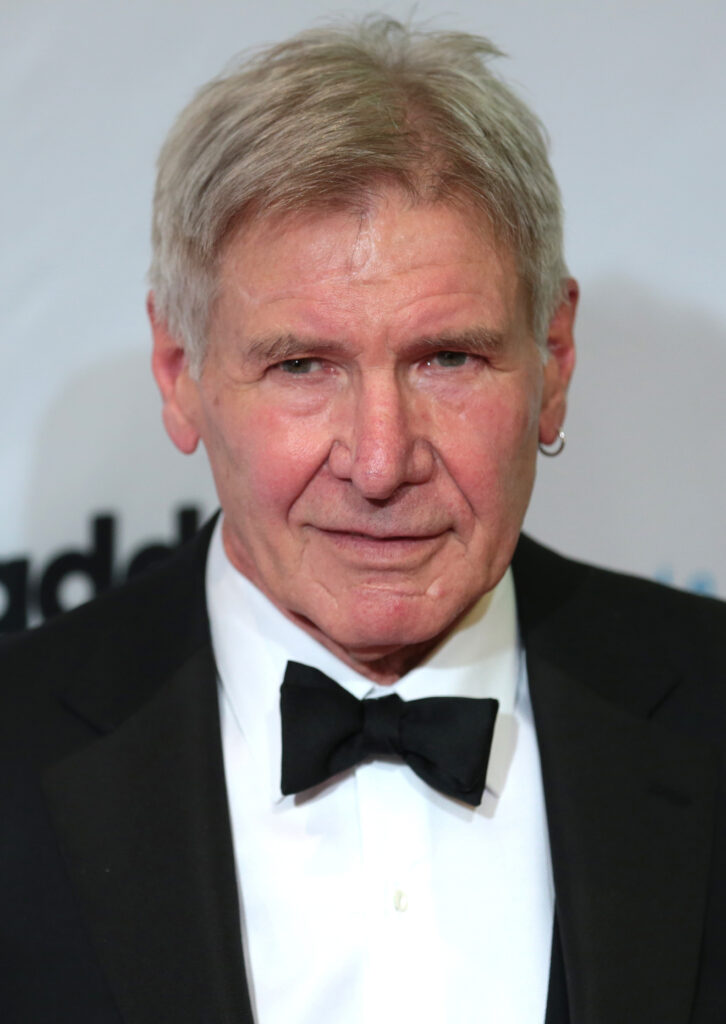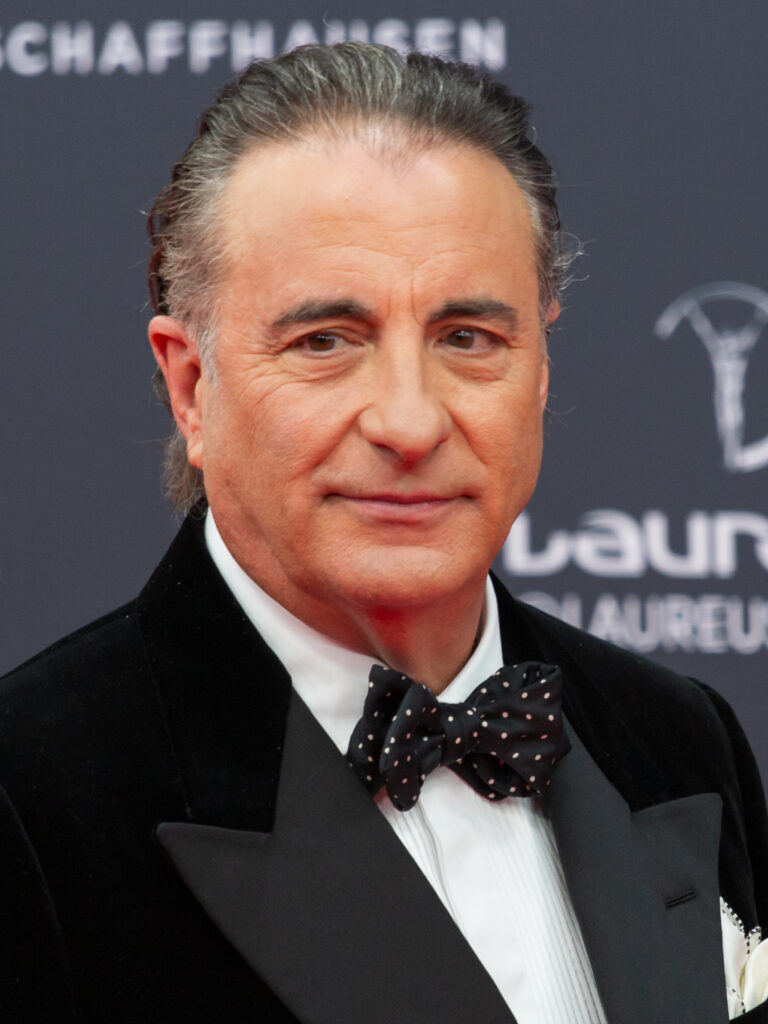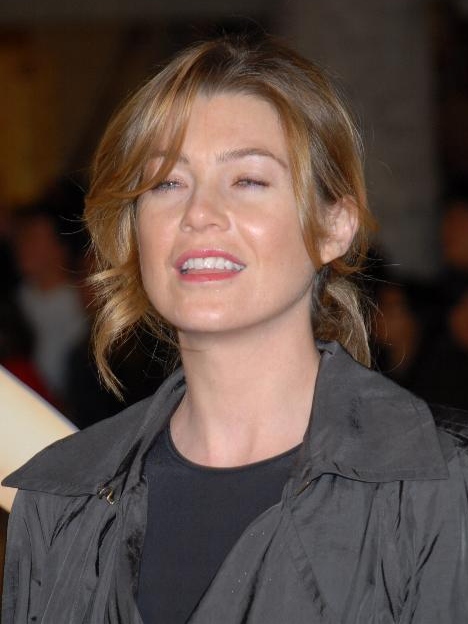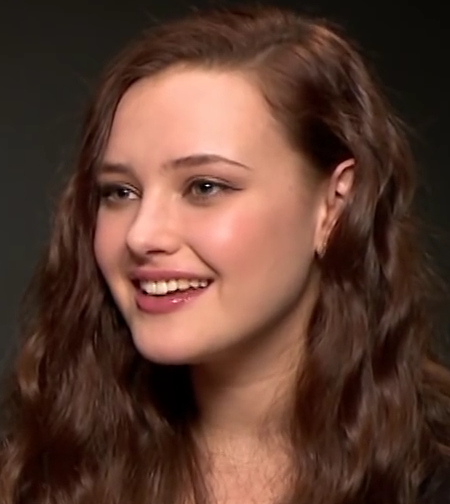
Ever wondered what magic truly happens behind the scenes of your favorite movies? Beyond the glitz, glamour, and red carpet premieres, there’s a whole other world of creative decisions that shape what we ultimately see on screen. And sometimes, those decisions mean that even the biggest stars, after pouring their heart and soul into a performance, end up on the cutting room floor.
It’s a tough truth in Hollywood: not every filmed scene makes it to the final cut. Whether it’s due to a change in the film’s narrative direction, a need to trim the runtime, or simply a director’s evolving vision, roles can be significantly reduced or even entirely removed. This happens to everyone, from actors just starting out to established A-listers with a string of blockbusters under their belts.
So, prepare yourself for a fascinating journey into the often-unseen side of moviemaking. We’re about to explore some of the most surprising, and sometimes heartbreaking, instances where prominent actors were promised significant roles, only to find their screentime drastically cut or completely erased. It’s a stark reminder that in the world of cinema, creativity often comes with tough choices.

1. Kevin Costner: The Big Chill
When we think of Kevin Costner, we picture him in iconic leading roles, but even he had an early brush with the cutting room floor. In the beloved 1983 ensemble dramedy *The Big Chill*, Costner was cast as Alex, the friend whose death by suicide brings the main characters together for a poignant reunion. He filmed scenes in flashbacks, intended to give the audience a glimpse into the life of the person whose absence shaped the entire film.
However, in a move that might surprise many, nearly all of Costner’s filmed sequences as Alex were chopped during post-production. The director, Lawrence Kasdan, later admitted that including the flashbacks changed the tone of the film, which was ultimately a comedy-drama, and they didn’t quite fit. As a result, only a few fleeting glimpses of Alex’s dead body remained in the theatrical release, leaving much of Costner’s work unseen.
Despite the disappointment of having his scenes cut, Costner’s professionalism clearly made an impression. It earned him Kasdan’s trust, a valuable commodity in Hollywood. This relationship paid off handsomely, as Costner went on to star in Kasdan’s very next release, the 1985 Western classic *Silverado*, solidifying his burgeoning career. It just goes to show that even when a role doesn’t pan out as expected, the connections you make can lead to bigger things.
Costner himself later lightheartedly joked about the experience, calling it his “biggest paycheck for doing nothing.” While it certainly wasn’t nothing, given the effort he put in, it highlights the often-unpredictable nature of filmmaking. Sometimes, a significant part can become almost invisible for reasons entirely beyond an actor’s control.

2. Jena Malone: Batman v Superman: Dawn of Justice
Before *Batman v Superman: Dawn of Justice* hit theaters, there was a buzz among fans about Jena Malone’s rumored role. Speculation ran wild that she was set to play a pivotal character, with many believing she would portray Barbara Gordon, who eventually becomes Batgirl. This kind of anticipation can build immense pressure, both on the filmmakers and the actors involved, and often sets high expectations for what audiences will see.
However, when the theatrical cut of the 2016 DC film was released, fans were left scratching their heads. Malone’s scenes were nowhere to be found; her role had been entirely deleted from the version shown in cinemas. It was a significant omission that left many wondering why such a prominent actress, who had been part of the pre-release hype, was completely absent from the final product.
Thankfully, for those eager to see her performance, Malone’s character was eventually revealed in the *Ultimate Edition*, a director’s cut of the film. In this extended version, it became clear that she was playing Jenet Klyburn, a S.T.A.R. Labs scientist. While it offered closure for curious fans, it also highlighted the drastic decisions made during the editing process for blockbuster films.
Director Zack Snyder defended the removal of Malone’s scenes from the theatrical cut, citing runtime constraints as the primary reason. Although this is a common justification in Hollywood, it didn’t sit well with many fans who felt misled by the initial rumors and promotions. Her exclusion remains a point of discussion among DCEU enthusiasts, showcasing how even minor cuts can spark considerable disappointment.

3. Jared Leto: *Suicide Squad*
Jared Leto’s portrayal of the Joker in *Suicide Squad* was one of the most talked-about aspects of the film even before its release. The intense hype surrounding his take on the iconic villain, coupled with stories of his method acting on set, promised a significant and unsettling performance. Expectations were sky-high for what Leto would bring to the DCEU as Batman’s archnemesis.
Yet, despite extensive scenes reportedly being filmed, the final cut of *Suicide Squad* featured surprisingly little of Leto’s Joker. In fact, his total screentime amounted to only around 10 minutes, a shockingly small portion for a character who had been so heavily promoted and anticipated. This stark contrast between expectation and reality left many viewers, and indeed Leto himself, feeling shortchanged.
Leto didn’t shy away from expressing his disappointment publicly. He revealed that a significant amount of his performance, including scenes that delved deeper into the Joker’s twisted relationship with Harley Quinn, had been cut. These omissions, he suggested, fundamentally altered the character’s arc and presence within the film, denying audiences a fuller understanding of his version of the Clown Prince of Crime.
Director David Ayer later confirmed that a lot of the Joker’s scenes were indeed cut, primarily in an effort to focus on the main story of the titular squad. This decision, however, has only fueled calls from fans for an “Ayer Cut” of *Suicide Squad*, hoping to see Leto’s full, unedited performance. His limited appearance remains one of the most contentious topics for DCEU fans, illustrating the lasting impact of drastic editorial choices.

4. Viggo Mortensen: *The Purple Rose of Cairo*
Before he was a globally recognized star, captivating audiences as Aragorn in *The Lord of the Rings* trilogy, Viggo Mortensen experienced the humbling reality of early Hollywood. In 1985, he was hired as an extra for Woody Allen’s fantasy rom-com *The Purple Rose of Cairo*, a film that explored the blurring lines between fiction and reality. It was an opportunity, however small, for a young actor to gain experience on a major production.
Mortensen’s role was meant to be a young cinema-goer, appearing alongside the lead actress Dianne Wiest in a scene. He put in the work, fulfilling his part as expected. However, in a creative decision that would become a familiar narrative in his early career, his scenes had already been cut by Allen. The director wanted to shrink the storyline and streamline the narrative, meaning Mortensen’s contribution ultimately didn’t make it to the silver screen.
It was a particularly poignant moment for Mortensen when his family, eager to see his big screen debut, went to watch the film only to discover his scenes had been edited out entirely. He has talked about this experience, the disappointment of having a moment you were excited for simply vanish. It’s a classic tale of the challenges faced by aspiring actors, where even a filmed part is no guarantee of screen time.
While it was undoubtedly a disappointment at the time, Mortensen’s career certainly didn’t suffer in the long run. He would go on to have a massively successful career in Hollywood, cementing his stature with critically acclaimed roles in films such as *Eastern Promises*, *A History of Violence*, and *Green Book*, in addition to his iconic *Lord of the Rings* role. He reflected on how his frustrating experience shooting the film turned out to be meaningless since he was edited out after its release, but clearly, perseverance paid off.

5. Adrien Brody: *The Thin Red Line*
Terrence Malick’s 1998 war epic *The Thin Red Line* is legendary not just for its poetic visuals and philosophical themes, but also for one of Hollywood’s most infamous episodes of drastic cuts. Many major actors found their roles either severely trimmed or entirely removed, making it a challenging experience for almost everyone involved. It’s a prime example of a director’s singular vision taking precedence over established star power.
Among those affected, Academy Award-winner Adrien Brody’s situation was particularly striking. He was initially cast as Cpl. Fife, the central lead of James Jones’ original novel, a role that promised significant screen presence. Brody even did press for the film, embodying what he believed would be his pivotal character, building anticipation for his performance.
However, the reality hit hard right before the premiere. Brody discovered that his extensive role had been drastically reduced, leaving him with barely a dozen lines. For an actor who had prepared to carry much of the film’s emotional weight, this was a profound shock. The character he had spent so much time developing was, for all intents and purposes, a ghost in the final cut.
Malick’s unusual approach to filmmaking, which prioritized cinematic atmosphere and visuals over individual character arcs, surprised most of the actors by their exclusion or diminished roles. Beyond Brody, a “bunch” of other stars like Bill Pullman, Mickey Rourke, Gary Oldman, and Martin Sheen ended up with zero screen time. Even George Clooney, a top star at the time, was left with barely a minute’s appearance, illustrating just how uncompromising Malick’s vision was.

6. Rachel Weisz: *To the Wonder*
Working with an auteur director like Terrence Malick often comes with a caveat: prepare for the unexpected in the editing room. Rachel Weisz learned this firsthand when she came aboard Malick’s 2012 romantic drama *To the Wonder*. She joined the project with a lot of hope, eager to contribute to the unique cinematic world Malick creates, but she was in for a significant surprise when the film was released.
Despite her involvement, Weisz later discovered that her scenes had been chopped without notice, a common occurrence in Malick’s post-production process. Although she had a relatively small role to begin with, Malick’s editing choices further trimmed much of her story, largely retaining the parts featuring Olga Kurylenko and Ben Affleck. It meant that her performance, however impactful it might have been, simply wasn’t part of the final narrative shown to audiences.
Weisz has since taken the experience in stride, even joking that being cut is somewhat of a “rite of passage” when it comes to working with Malick. His films are indeed known for some of the most drastic post-production cuts in Hollywood, often re-shaping narratives and character prominence long after filming has wrapped. It’s a testament to the trust actors place in a director’s vision, even when it means their work might not see the light of day.
She spoke to La Stampa about how she had the pleasure of working with Malick but would “not have the pleasure of seeing [her] work.” Weisz was not alone in this experience; IndieWire later reported that other talented actors like Barry Pepper, Michael Sheen, and Amanda Peet were also notably missing from the final cut. It’s a reminder that even for accomplished actors, filmmaking is a collaborative art that can sometimes lead to personal parts becoming secondary to the overall vision.

7. Robert Pattinson: *Vanity Fair*
Before he was a global sensation in *Twilight* or donning the cape and cowl as Batman, Robert Pattinson had an early encounter with the harsh realities of movie editing. In Mira Nair’s 2004 period drama *Vanity Fair*, Pattinson was cast in what seemed like a promising role: the son of Reese Witherspoon’s protagonist. It was an opportunity to work alongside a major star in a significant adaptation.
However, when the film eventually made its way to theaters, Pattinson’s scenes were entirely left out of the theatrical run. The decision was primarily attributed to runtime considerations, a common reason for cuts in a competitive cinematic landscape. Directors and editors often have to make tough choices to ensure a film flows well and doesn’t overstay its welcome, even if it means sacrificing good performances.
Pattinson later recounted the somewhat awkward way he discovered his fate: he joked about finding out he was cut when he didn’t receive an invitation for the film’s premiere. He further clarified that he found out his role had been entirely cut during a screening of the movie itself. It’s a rather unceremonious way for a young actor to learn that their work won’t be seen by the wider public.
While it was undoubtedly a disappointment early in his career, it certainly didn’t hinder Pattinson’s trajectory. He would go on to achieve global stardom with the *Twilight* franchise and establish himself as a versatile actor in both independent and blockbuster films. Interestingly, his casting director, feeling guilty about the *Vanity Fair* cut, later gave him a “first run” at a part in *Harry Potter*, demonstrating that even setbacks can sometimes open new doors.
Now, let’s dive even deeper into the wild world of Hollywood editing, where a star’s presence can vanish with the snip of a digital scissor. We’ve seen how brilliant performances are often left on the cutting room floor for various reasons, from artistic vision to runtime limits. Get ready for seven more astonishing stories of actors who found their significant roles become mere whispers, or even disappear entirely, from films we know and love. It’s a testament to the tough choices filmmakers face, and the resilience actors develop.

8. Ana de Armas: *Yesterday*
Imagine landing a role in a charming musical rom-com, you film your scenes, and even appear in the trailer, only for your character to be completely wiped from the final cut! That’s exactly what happened to the incredibly talented Ana de Armas in the 2019 film *Yesterday*, which explored a world where The Beatles never existed. She was cast as Roxanne, a guest on *The Late Late Show* to whom Jack Malik (Himesh Patel) romantically sings “Something.”
However, director Richard Curtis made the difficult decision to cut Roxanne entirely. His reasoning? He wanted to avoid making Jack’s relationship with Ellie (Lily James) any more complicated. This classic narrative choice, focusing on the core romance, meant De Armas’s performance, showcased in early promotional material, wouldn’t be seen by audiences.
This decision sparked quite a bit of controversy, especially since De Armas featured prominently in the movie’s trailers. Fans, feeling misled by the marketing, actually pursued legal action against Universal for false advertising! The lawsuit claimed that “Defendant’s advertising and promotion of the movie is false, misleading, and deceptive.” It just goes to show how frustrating it can be when expectations built by pre-release hype aren’t met.

9. Harrison Ford: *E.T. the Extra-Terrestrial*
Even legendary actors like Harrison Ford aren’t immune to the editor’s axe, sometimes for surprisingly subtle reasons. Back in 1982, Ford made a cameo in Steven Spielberg’s timeless classic, *E.T. the Extra-Terrestrial*. He played Elliott’s principal, a scene where he was meant to interact with the young protagonist, Henry Thomas. It felt like a perfect fit, especially since he had just wrapped *Indiana Jones* with Spielberg.
However, this scene, despite being filmed and featuring a star of Ford’s caliber, never made it into the final cut of the movie. Spielberg himself later explained that the scene was cut because it didn’t quite go along with the rest of the film’s tone. Perhaps even more importantly, he felt that Harrison Ford’s star power was a bit of a “distraction” from everything else, potentially pulling focus away from Elliott and E.T.’s magical bond.
It’s fascinating that a director might intentionally hide a major star’s face to maintain the narrative’s integrity. Even though his character, the principal, would have gone mostly unseen as the camera never shows his face, his presence was still deemed too impactful. The good news for curious fans is that this deleted scene can still be found on YouTube today, offering a glimpse into what might have been.

10. Timothée Chalamet: *Interstellar*
Before he was captivating audiences in *Dune* or *Wonka*, a young Timothée Chalamet had a particularly poignant experience with a role being cut. In Christopher Nolan’s sprawling 2014 sci-fi epic *Interstellar*, Chalamet was cast as Matthew McConaughey’s character’s son, Tom, a significant family connection in a film about cosmic voyages and human survival.
He played the younger version of Tom, with Casey Affleck portraying the older iteration, and filmed scenes that explored this character’s journey. However, when the film hit theaters, most of Chalamet’s scenes were significantly reduced. The narrative ultimately focused more heavily on the older version of the character, leaving Chalamet with a much smaller presence than he had anticipated.
The emotional impact of this cut on Chalamet was profound. He later shared how he “wept for an hour” after seeing the movie because he genuinely didn’t expect his part to be as small as it ended up being. This raw and honest admission highlights the personal investment actors put into their roles and the shock when those efforts don’t fully translate to the screen.
Though undoubtedly a disappointment at the time, this experience is a powerful reminder that even the most talented actors navigate the unpredictable currents of filmmaking. Chalamet himself reflected that his frustrating experience shooting the film turned out to be meaningless since he was edited out after its release, but clearly, perseverance paid off as he achieved global stardom.
Read more about: Hollywood’s New Guard: Unpacking the Rise of the Next-Gen A-Listers You Need to Know Now

11. Andy García: *Dangerous Minds*
Sometimes, an actor’s role isn’t cut because it’s poorly performed or a distraction, but simply because it doesn’t quite fit the story. That was the case for Andy García in the 1995 drama *Dangerous Minds*, starring Michelle Pfeiffer as inner-city teacher Louanne Johnson. García was brought in to play a potential love interest for Pfeiffer’s character, a narrative thread common in many dramas.
However, García himself reportedly felt his character wasn’t strictly necessary to the film’s core story. He openly expressed this sentiment, even though he proceeded to shoot the scenes as written. It’s a rare and honest perspective from an actor, recognizing that sometimes less is more for the overall narrative, even if it means his own screen time takes a hit.
True to his own intuition, García wasn’t surprised when his role was ultimately edited out of the movie. The scenes he filmed, which were not even part of the initial script, were removed from the final cut. This decision likely maintained focus on Louanne Johnson’s journey and her relationships with her students, rather than adding a romantic subplot that might have diverted attention.

12. Paul Rudd: *Bridesmaids*
Who doesn’t love Paul Rudd? His charm and comedic timing are undeniable, which makes it even more surprising that he was originally in the hilarious 2011 hit *Bridesmaids* but ended up on the cutting room floor! He played one of Kristen Wiig’s character Annie’s blind dates, a role that promised some classic Rudd-infused awkward humor.
However, due to runtime constraints and the director’s vision, his scenes didn’t make it into the final movie. Director Paul Feig later confessed that he “felt bad” cutting Rudd’s darkly funny cameo. The film already had Annie’s main love interest with Rhodes (Chris O’Dowd) and a comedic rival in Ted (Jon Hamm). Introducing another love interest would have further complicated the narrative and potentially lengthened the film unnecessarily.
Feig perfectly captured the agony of such decisions, stating, “There is always that terrible moment when you have to kill your babies.” It’s a brutal but often necessary part of editing, where beloved scenes are sacrificed for pacing and narrative clarity. While we missed out on a Paul Rudd cameo, the film still became a comedy classic, proving that sometimes, even great additions need to step aside for the overall flow.

13. Ellen Pompeo: *Eternal Sunshine of the Spotless Mind*
Prepare for a mind-bending revelation that would have completely altered how you perceived one of cinema’s most beloved romantic sci-fi dramas! Ellen Pompeo, widely known for *Grey’s Anatomy*, was actually cast in Michel Gondry’s 2004 masterpiece, *Eternal Sunshine of the Spotless Mind*. She played Naomi, Jim Carrey’s character Joel’s ex-girlfriend, the woman he left for Clementine (Kate Winslet).
Pompeo not only filmed all her scenes for the movie but her character was an integral part of an alternative narrative arc. In these deleted scenes, Joel reconciles with Naomi after his memory wipe, only to leave her again when he meets Clementine on the train, completely unaware that he has gone through this exact cycle before. This arc would have painted Joel’s character in a very different light.
Director Michel Gondry and editor Valdís Óskarsdóttir explained their drastic decision: they removed Ellen’s character because her inclusion significantly changed how the audience would perceive Jim’s character. Without Naomi, Joel’s actions and emotional journey were interpreted differently, creating the beloved, somewhat more sympathetic character we know today. It’s a powerful example of how character inclusions can profoundly shift an audience’s understanding of a protagonist.

14. Katherine Langford: *Avengers: Endgame*
Even the biggest blockbusters, with massive ensemble casts and sprawling narratives, aren’t immune to the editor’s judgment. *Avengers: Endgame*, the culmination of years of Marvel storytelling, had to make some tough choices, and one of them involved cutting a very poignant scene featuring Katherine Langford. She was cast as an older version of Tony Stark’s daughter, Morgan.
The scene was intended to take place immediately after Tony Stark famously “snapped” Thanos away, sacrificing himself for the universe. In this deleted sequence, Tony would have been given a chance to say one final, emotional goodbye to an older Morgan in the Soulworld, a spiritual plane seen previously in *Infinity War*. It was meant to be a powerful and heart-wrenching moment.
However, the Russo brothers, the directors of *Endgame*, ultimately decided to cut the scene. Their reasoning was that they didn’t think it made sense with the ending of the movie, as audiences had no prior relationship with an adult Morgan. While it offered beautiful closure, its removal ensured the emotional weight remained focused on the immediate aftermath of Tony’s sacrifice. Its omission also gives Langford the chance to play a different Marvel character down the line!
So there you have it, folks! From subtle adjustments to preserve a film’s tone, to major narrative overhauls for pacing or audience perception, the cutting room floor is a bustling place where countless performances meet their quiet end. It’s a stark, often surprising, reminder that cinema is a dynamic art form, constantly evolving even after the cameras stop rolling. Every scene, every line, every character is a piece of a puzzle, and sometimes, to make the masterpiece shine, a few pieces just don’t make the final picture. It’s the magic, and sometimes the heartbreak, of Hollywood!



